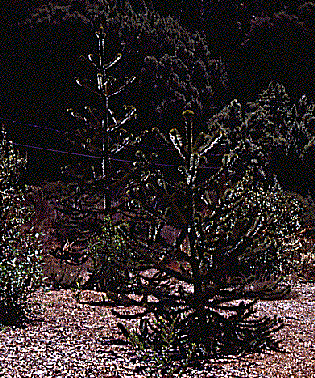Introduction to the Araucariaceae


Araucariaceae is one of the most interesting and publicized groups of conifer. As you watch one of the many movies where adventurers trek through the tropical forests, you notice the tall and large trees that tower over the entire forest. Araucariaceae trees help make up the tall canopy over many of these tropical forests. The broad leaves of Araucariaceae create the roof of the forest.
Araucariaceae is commonly refer to as "The Monkey Puzzle Tree." Extant species of Araucariaceae is generally found in the southern hemisphere. But the Araucaria excelsa (Norfolk Island Pine) is grown as house plants in Florida and California. There are many uses for the trees in this family. Agathis wood is good for building purposes, while the fossilized residues of Agathis are used to make wood varnishes. Araucaria wood is useful for inside finishing to homes, furniture, carving, and for paper pulp. The seeds of Araucaria are edible and several species produce useful resins.
Araucariaceae has also recently made itself into the news with the discovery of a new genus in Australia. Wollemia was discovered in 1994 and made it into newspaper headlines. It occurs in two very small strands in a narrow canyon in the sandstone massif of the Wollemi Wilderness, within 150 km of Sydney. Its strong ties to the fossil record of Araucariaceae gives scientists a look into the past of one of the most ancient families of extant conifers.
For more information on botany in general, see Botany.com . A common guide to conifer is available at Albion University . For the maintenance of plants in general, check out Garden Info . An image gallery is available at Texas A&M University .


